Our Objectives
Objective of the Foundation

A. Growth and development of human capabilities:
The advent of Particle Physics and investigations into subtler constituents of material existence has brought modern science closer to the domains of spiritual sciences. Many scientists now recognize human body as a magnificent reservoir of vital power. The immense potentials existing intrinsically in this living system are beyond imagination. Neuroscientists often argue that in the normal case, the active memory of human brain stores just about 1% of the knowledge and information gathered by it over a long period of time. That means, on an average we forget about 99% of what we read, heard or perceived in the past.... Then how is it possible that some people are able to recall all details of the past events - including the distant past - with ease. Such wonders of memory are found in some people since birth; the hidden layers of memory get activated all of a sudden in some others. Medical science declares such cases as exceptional while the parapsychologists consider them as examples of the supernatural potentials of human brain.
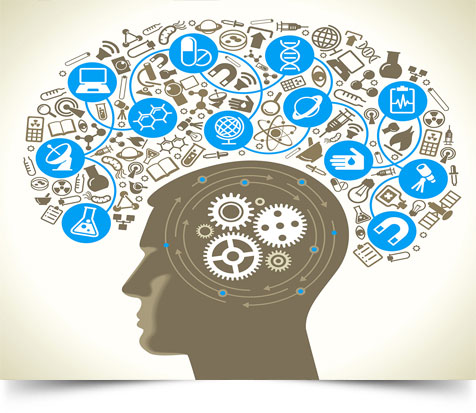
B. Education and training for the upliftment of mankind through the establishment and operating of research and training centers for the advancement of this objective.
Investing in education is the single most effective way of reducing poverty.
Education is more than reading, writing, and arithmetic. It is one of the most important investments a country can make in its people and its future and is critical to reducing poverty and inequality. If all students in low income countries left school with basic reading skills 171 million people could be lifted out of poverty.
Schools and other educational institutes define the basic framework of education. Schooling strengthens the fundamentals. We specialize in fields of our interest during degree courses. The number of institutes offering vocational courses and those offering online education is increasing by the day. Vocational courses help earn specialized education.
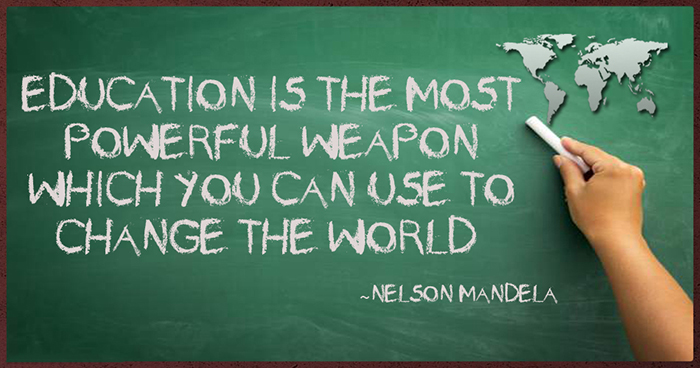

C. Committees for the safeguard, training and propagation of human values and rights. Formation and operating and takeover of such committees.
Peace, development and human rights are essentially inter-related, inter-dependent and indivisible. The Foundation plays an important role to become a concrete expression of international, national and regional and local level voice to assist and stand up for those who can’t speak themselves. Every human being is entitled to certain basic human rights which are available to them without discrimination of any sort. Human rights are protected by the United Nations and its specialized agencies. In most countries human rights are protected by the judiciary, human rights commissions, apart from these organizations the Non Governmental organizations also have an important role in protection of human rights. The Non Governmental organizations work from grass roots level to the national and international level in the protection of human rights.
Internationally, our rich diversity of cultures and religions should help to strengthen fundamental human rights in all communities. Underlying this diversity are basic human principles that bind us all together as members of the same human family. The question of human rights is so fundamentally important that there should be no difference of views about it. We all have common human needs and concerns.


D. Construction, operating and takeover of hospitals and health centers for the purpose of health assessment.
Ironically, when it comes to treating the ailments of modern life -- which can be exacerbated by chronic stress and a relentlessly fast-paced life -- thousand-year-old healing methods might be some of the best remedies.
The exploding popularity of meditation and yoga in the West -- the physical and mental health benefits of which are supported by an extensive body of scientific research -- have put ancient healing methods on the map. In addition to the more popular mindfulness practices, there are many more timeworn (but still science-supported) self-healing methods you may not have heard of that can work wonders in boosting your health and well-being.
As the early Greek physician Hippocrates said,“The natural healing force within each of us is the greatest force in getting well.”


E. Eradication of poverty, employment generation and give boost to regional arts and crafts. Formation ,operating and takeover of committees for the above.
Today in many developing nations, handicraft production is a major form of employment and in some countries constitutes a significant part of the export economy. Observers of the handicraft sector predict that the escalating number of small businesses turning to handicraft production is very likely to significantly increase in the future. More specifically, artisans have been identified as the second largest sector of rural employment after agriculture in many regions of the world.
Handicraft production crosses all sectors of the modern global economy, artisans production has thrived because these products offer distinct advantages: minimal start up capital, flexible working hours, the ability to work at home, and the freedom to manage one’s own business. Unlike many other forms of labor, artisan production can also enable a degree of labor autonomy for those who have limited access to the cash economy. As a means of livelihood, these cottage industries provide an ideal avenue for creative , independent entrepreneurs. In addition, they offer opportunities for seasonal employment and small production runs, and the sector is often a default occupation for producers who have limited options for employment.
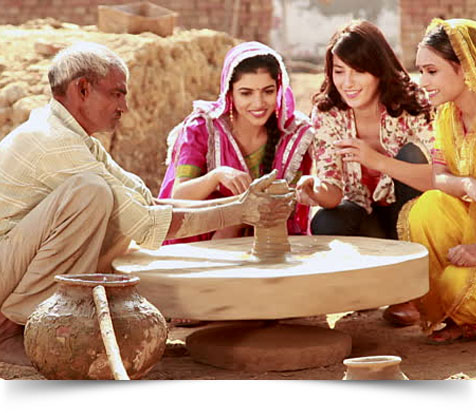

F. Organizing awareness campaigns for knowledge on fatal diseases and every possible aid to the aggrieved.
Chronic diseases are the major causes of morbidity and mortality across the globe in developed and developing countries, and in countries transitioning from former socialist status. Chronic diseases – including heart disease, cancer, stroke, diabetes, and respiratory diseases – share major risk factors beyond genetics and social inequalities including tobacco use, unhealthy diet, physical inactivity, and lack of access to preventive care.
There are evidence-based interventions that are effective in modifying these risks and subsequently preventing disease. The New Public Health addresses interventions delivered at
three levels:
1) at the level of society, where public policy and governmental interventions can change the environment, as well as individual
behavior (e.g., regulation of tobacco products and food composition, taxation, redesigning the built environment, banning advertising);
2) at the level of the community, through the
activities of local institutions delivered at the population level (e.g., school-based and workplace health promotion, community education, training, and public awareness campaigns)
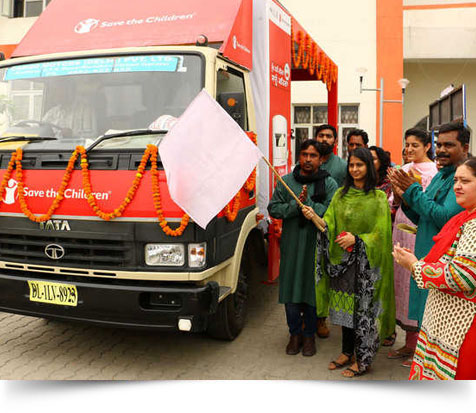

G. Formation and operating of committees for imparting education subsidy and scholarships.
Scholarship is a boon for students, belonging to the weaker sections of the society, who are unable to further their education for some reason or the other. Scholarship is an incentive as well as encouragement for students, who are talented, but do not have the means to study further. There are a variety of scholarships – merit-based, need-based, student-specific, career-specific, and college-specific. The organization has streamlined its activities to the level of primary and secondary education for the under privileged students with uniform, books, stationery, extra tuition and a meal each day. To provide the students with the appropriate environment as well as back up for education.
This scholarship programme is founded with the belief of:-

H. Spirituality, Yoga, Meditation, breathing techniques along with modern techniques, processes, creations and compositions through the setting up, operating and takeover of social network techniques and satellite networks.
We strongly believe in continuous evolution of consciousness and personality which is guided and supported by Knowledge, Information, Facts and Figures. Following points are worth noting:
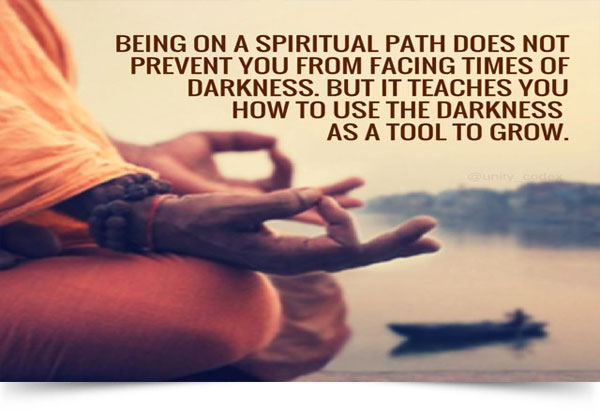

I. Fortify fundamental needs of masses and safeguard and disaster recovery work from natural and un-natural calamities through the formation of self service committees.
Helping proper drinking water supply
Drinking water quality standards describes the quality parameters set for drinking water. Despite the truism that every human on this planet needs drinking water to survive and that water may contain many harmful constituents, there are no universally recognized and accepted international standards for drinking water. Even where standards do exist, and are applied, the permitted concentration of individual constituents may vary by as much as ten times from one set of standards to another. Many developed countries specify standards to be applied in their own country. Where drinking water quality standards do exist, most are expressed as guidelines or targets rather than requirements, and very few water standards have any legal basis or, are subject to enforcement.
Hygiene practices are linked to the water issue. Hand washing is also very low, increasing the spread of disease. In order to decrease the amount of disease spread through drinking-water, toilet usage and hygiene must be improved simultaneously. In many countries, women are responsible for finding and fetching water for their families. All the water they need for drinking, washing, cooking, cleaning. They walk miles, carry heavy burdens, wait for hours and pay exorbitant prices. The work is back-breaking and all-consuming. Often the water is contaminated, even deadly. In these instances, they face an impossible choice – certain death without water or possible death from illness.

The Social Welfare Role - where relief and charity are key actions.
Facilitating Communication: The significance of this role to the government is that NGOs can communicate to the policy-making levels of government, information about the lives, capabilities, attitudes and cultural characteristics of people at the local level. NGOs can facilitate communication upward from people to the government and downward from the government to the people. In some cases, foundation become spokespersons or ombudsmen for the poor and attempt to influence government policies and programs on their behalf. This may be done through a variety of means ranging from demonstration and pilot projects to participation in public forums and the formulation of government policy and plans, to publicizing research results and case studies of the poor.
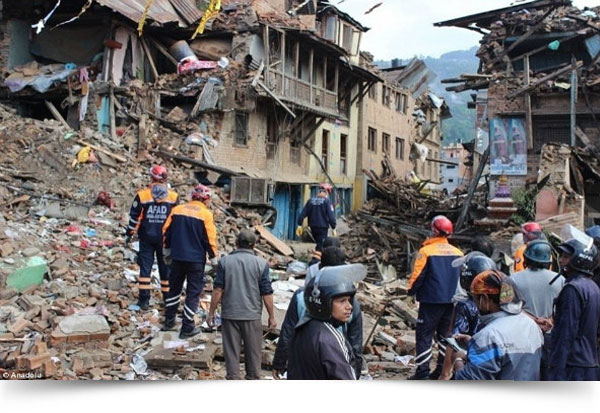
Role in disaster management:
Any disaster can interrupt essential services, such as health care, electricity, water, sewage/garbage removal, transportation and communications. The interruption can seriously affect the health, social and economic networks of local communities and countries. Disasters have a major and long-lasting impact on people long after the immediate effect has been mitigated. Poorly planned relief activities can have a significant negative impact not only on the disaster victims but also on donors and relief agencies. So it is important that physical therapists join established programmes rather than attempting individual efforts. These are activities designed to provide permanent protection from disasters. Not all disasters, particularly natural disasters, can be prevented, but the risk of loss of life and injury can be mitigated with good evacuation plans, environmental planning and design standards. These activities are designed to minimize loss of life and damage – for example by removing people and property from a threatened location and by facilitating timely and effective rescue, relief and rehabilitation. Preparedness is the main way of reducing the impact of disasters. Community-based preparedness and management should be a high priority Relief activities include rescue, relocation, providing food and water, preventing disease and disability, repairing vital services such as telecommunications and transport, providing temporary shelter and emergency health care.
Once emergency needs have been met and the initial crisis is over, the people affected and the communities that support them are still vulnerable. Recovery activities include rebuilding infrastructure, health care and rehabilitation. These should blend with development activities, such as building human resources for health and developing policies and practices to avoid similar situations in future.
The advent of Particle Physics and investigations into subtler constituents of material existence has brought modern science closer to the domains of spiritual sciences. Many scientists now recognize human body as a magnificent reservoir of vital power. The immense potentials existing intrinsically in this living system are beyond imagination. Neuroscientists often argue that in the normal case, the active memory of human brain stores just about 1% of the knowledge and information gathered by it over a long period of time. That means, on an average we forget about 99% of what we read, heard or perceived in the past.... Then how is it possible that some people are able to recall all details of the past events - including the distant past - with ease. Such wonders of memory are found in some people since birth; the hidden layers of memory get activated all of a sudden in some others. Medical science declares such cases as exceptional while the parapsychologists consider them as examples of the supernatural potentials of human brain.
Every individual contains unlimited repository of conscious energy. An ordinary man spends his average life of about sixty years in eating over 35 stones of various eatables and sleeping for almost half his life span.
If he realizes this fact at an early age and endeavors to arouse and properly channelize his potentials in every second of his life, he can also attain supernormal talents and become immortal in history. Some people think that extraordinary talents are God-gifted destined qualities brought since the time of birth or such potentials are the results of boons and blessings of divine souls. This is not quite true. Man is indeed an architect of his own destiny. It is in his own hands to inculcate righteous tendencies and sincerely pursue the development and refinement of his own talents.
It is only the sensible and creative use that can ensure growth and improvement of talents. In the present context, we refer to the word ‘talent’ as a perfect combination of intellectual and other creative potentials with serene sentiments and ideals of humanity. This concept of talent is related to a composite development of belief and intellectual capabilities in people, which is always helpful in promoting righteous growth of human society. It is the group of such talented personalities that inspires many others towards noble goals and sets progressive trends in the history of any society. We are focusing here on the origin and evolution of this kind of talent in any human being.
Why Education?
Though not enlisted as one of the three basic human needs, education is equally important. For the progress of a nation, for the enrichment of society in general, education is important. A country's literate population is its asset. In today's competitive world, it won't be wise to neglect the importance of education for the development of society as a whole. Most countries have realized this. It has led to the development of many government-aided educational programs and government grants to schools and colleges. The motive behind this is fostering education in society. The future of a nation is safe in the hands of the educated. Education is important for the social development and economic growth of a nation.
Schools and other educational institutes define the basic framework of education. Schooling strengthens the fundamentals. We specialize in fields of our interest during degree courses. The number of institutes offering vocational courses and those offering online education is increasing by the day. Vocational courses help earn specialized education.
Ideology behind research centers: The unity of man and nature. Human beings live in the realm of nature, they are constantly surrounded by it and interact with it. The most intimate part of nature in relation to man is the biosphere, the thin envelope embracing the earth, its soil cover, and everything else that is alive. Our environment, although outside us, has within us not only its image, as something both actually and imaginatively reflected, but also its material energy and information channels and processes. This presence of nature in an ideal, materialized, energy and information form in man's Self is so organic that when these external natural principles disappear, man himself disappears from life. If we lose nature's image, we lose our life.
C. Committees for the safeguard, training and propagation of human values and rights. Formation and operating and takeover of such committees.
Peace, development and human rights are essentially inter-related, inter-dependent and indivisible. The Foundation plays an important role to become a concrete expression of international, national and regional and local level voice to assist and stand up for those who can’t speak themselves. Every human being is entitled to certain basic human rights which are available to them without discrimination of any sort. Human rights are protected by the United Nations and its specialized agencies. In most countries human rights are protected by the judiciary, human rights commissions, apart from these organizations the Non Governmental organizations also have an important role in protection of human rights. The Non Governmental organizations work from grass roots level to the national and international level in the protection of human rights.
Internationally, our rich diversity of cultures and religions should help to strengthen fundamental human rights in all communities. Underlying this diversity are basic human principles that bind us all together as members of the same human family. The question of human rights is so fundamentally important that there should be no difference of views about it. We all have common human needs and concerns.


There is a great and growing desire for change in the world; change that ushers in a renewed commitment to ethical and spiritual values, that resolves conflicts peaceably, employing dialogue and non-violence, that upholds human rights and human dignity as well as human responsibility. We need change that educates and promotes the urgent need to care for the planet and its ecological systems, that calls upon all nation states to work towards the universal abolition of nuclear and other weapons of mass destruction and that encourages peace, compassion, respect and warm-heartedness. We believe that these goals can be achieved on the basis of increased awareness. Let us widen our perspective to include the well being of the whole world and its future generations in our vision of prosperity and freedom.
Among the most prominent human rights issues are the ones related to Gender and children. Gender disparity manifests itself in various forms, the most obvious being the trend of continuously
declining female ratio in the population in the last few decades. Social stereotyping and violence at the domestic and societal levels are some of the other manifestations.
Discrimination against girl children, adolescent girls and women persists in parts especially the developing countries.
The underlying causes of gender inequality are related to
social and economic structure, which is based on informal and formal norms, and practices.
Child labor
Children have the right to a joyful childhood. Every child has the right to grow up in a safe and nurturing environment with protection and guidance from their guardians. Whether in the cities or in villages, at home or in schools, a child is always a child and deserves a childhood free from exploitation and abuse. Yet millions of children are being robbed of their childhoods every day.
They are employed in many industries and trades, including garments, footwear, brick kilns, stainless steel, hotels, and textile shops. Many work in export-oriented hazardous industries like carpet weaving, gem polishing, glass blowing, match works, brassware, electro-plating, lead mining, stone quarrying, lock making and beedi rolling (indigenous cigarette in which tobacco is rolled in a tendu leaf).
Restoring Childhoods
Promoting children basic right to education. Core is the emphasis on children’s entitlement, access and retention in education as major strategy to eliminate, but most importantly to prevent child labor. Initiatives include mass enrolment campaigns, support to transitional education programs (bridge schools), community based sensitization programs, education quality package for formal education, as well as initiatives aimed to facilitate and strengthen strategic convergence among key institutional stakeholders.
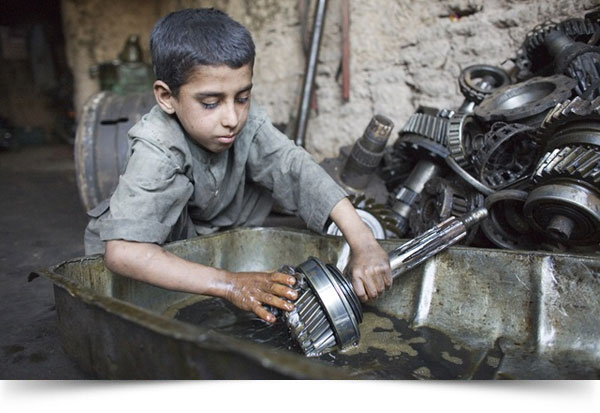
D. Construction, operating and takeover of hospitals and health centers for the purpose of health assessment.
The methods of Natural/Natural Healing indeed aim at harmonizing this supply by re-linking the patient’s consciousness with its eternal origin.... Modern methods of treatment – especially Allopathy is based on considering human entity as specific ensemble of biochemical and physiological combinations and processing in a physical system. Here, the cause of any disease is searched in possible variations or transformations in the associated elements or reactions at the organ, cellular or molecular levels.
Ironically, when it comes to treating the ailments of modern life -- which can be exacerbated by chronic stress and a relentlessly fast-paced life -- thousand-year-old healing methods might be some of the best remedies.
The exploding popularity of meditation and yoga in the West -- the physical and mental health benefits of which are supported by an extensive body of scientific research -- have put ancient healing methods on the map. In addition to the more popular mindfulness practices, there are many more timeworn (but still science-supported) self-healing methods you may not have heard of that can work wonders in boosting your health and well-being.

“The natural healing force within each of us is the greatest force in getting well.”

Drug therapies, non-invasive techniques, surgical operations etc are aimed at controlling the identified (if any) disturbances of these sorts in the functioning of the body - including the brain as an organ in it. The effects of such treatments do balance proper reactions and set the biochemical, bio-electrical and physiological functioning of the interconnected sub-systems in the body well in order in many cases but do not annul the possibilities of recurrence or adverse side effects..... Such approaches and therapies, do not achieve the fundamental principle of health. As discussed by erudite experts and successful doctors, total and viable health can be attained naturally by having proper linkage of a living being with its source of life... The origin of life resides in the Eternal Cosmic Natural Force.... The processes of natural healing establish and strengthen the patient’s linkage with this Supreme source of life and therefore easily treat complex diseases permanently.
Apart form diminishing the declared ‘incurable’ disorders and diseases, the instances of offering eyesight to the blinds, voice to the mutes (including born blind and dumb).... etc are also achieved by this therapy. The effects of natural healing appear miraculous. However- something is astonishing if it occurs in a supernatural manner or appears to have taken place due to some esoteric reasons. But, natural healing works on well-explained and logical principles. In his words, “every phenomena has a reason of occurrence and every process, every kind of transformation in the natural state of system requires some power.... Natural Healing makes use
of the vital energy, which cannot be measured by physical instruments nor can it be described in the terminology of matter based sciences. Its effects and mode of functioning appear to be mysterious or astonishing to most people mainly because of their inability to sense the subtle world beyond the three dimensional expansion perceived by their sense organs.” As the description of color has no meaning for a born blind, understanding the mode of natural healing is not possible for people unless they have experienced the existence of vital force in themselves or realized the natural domains of life in the inner self.... Special kinds of knowledge, training, acumen and experiences are required for mastering any branch of science or practicing any mode of therapies. The same is true in case of natural sciences too. This therapy has now received recognition and favorable response everywhere because of the successful treatment of thousands of complicated and otherwise incurable disease in the past three to four decades. As mentioned earlier, mind is the principal regulator and conductor of the brain and body functions. Psychologists consider it as the omnipotent ruler of the body.
E. Eradication of poverty, employment generation and give boost to regional arts and crafts. Formation ,operating and takeover of committees for the above.
Today in many developing nations, handicraft production is a major form of employment and in some countries constitutes a significant part of the export economy. Observers of the handicraft sector predict that the escalating number of small businesses turning to handicraft production is very likely to significantly increase in the future. More specifically, artisans have been identified as the second largest sector of rural employment after agriculture in many regions of the world.
Handicraft production crosses all sectors of the modern global economy, artisans production has thrived because these products offer distinct advantages: minimal start up capital, flexible working hours, the ability to work at home, and the freedom to manage one’s own business. Unlike many other forms of labor, artisan production can also enable a degree of labor autonomy for those who have limited access to the cash economy. As a means of livelihood, these cottage industries provide an ideal avenue for creative , independent entrepreneurs. In addition, they offer opportunities for seasonal employment and small production runs, and the sector is often a default occupation for producers who have limited options for employment.

Indian sub continent has always been known as the land that portrayed cultural and traditional vibrancy through its conventional arts and crafts. The various regions have their own distinct cultural and traditional identities, and are displayed through various forms of art prevalent there which is known as folk art. Other than folk art, there is yet another form of traditional art practiced by several tribes or rural population, which is classified as tribal art.
Folk art is however not restricted only to paintings, but also stretches to other art forms such as pottery, home decorations, ornaments, cloths-making, and so on. Tribal art, like folk art, has also progressed considerably due to the constant developmental efforts of the governments and other organizations. Tribal art generally reflects the creative energy found in rural areas that acts as an undercurrent to the craftsmanship of the tribal people. Tribal art ranges through a wide range of art forms, such as wall paintings, tribal dances, tribal music, and so on.
Moreover, the regional dances which project the cultural heritage of those regions, are prominent contenders in the field of folk art. These folk dances are performed by people to express their exhilaration on every possible event or occasion, such as the arrival of seasons, the birth of a child, weddings, festivals, etc.
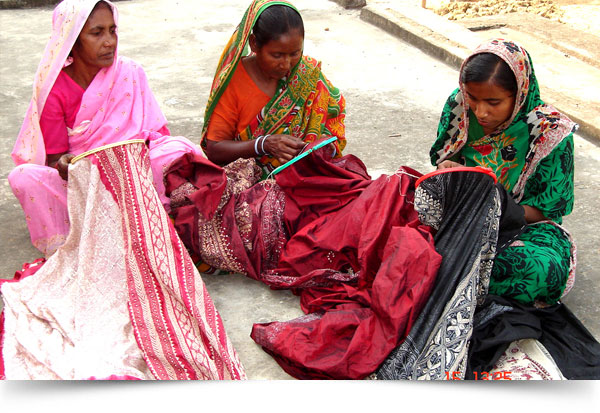
Handicrafts & Handlooms is a growing and vital sector of developing economies both in terms of generating employment and earning foreign exchange for the country with negligible import content. This sector is decentralized and highly labor intensive. To provide marketing opportunities to artisans of the far-flung areas in the metro/large cities, there is a need from the Govt. & NGOs to actively take interest by organizing different types of marketing programs. The craft persons need to be provided stalls, infrastructure facilities and publicity etc. for these type of programs.
For competitive Marketing of handicraft products, Corporations/NGOs & Coop. Societies engaged in the field of handicraft development are making all out efforts for the up-gradation of the handicraft/handloom sector. This opportunity is providing livelihood to a large number of artisans who otherwise do not get adequate marketing outlets for sale of their products.
F. Organizing awareness campaigns for knowledge on fatal diseases and every possible aid to the aggrieved.
Chronic diseases are the major causes of morbidity and mortality across the globe in developed and developing countries, and in countries transitioning from former socialist status. Chronic diseases – including heart disease, cancer, stroke, diabetes, and respiratory diseases – share major risk factors beyond genetics and social inequalities including tobacco use, unhealthy diet, physical inactivity, and lack of access to preventive care.
There are evidence-based interventions that are effective in modifying these risks and subsequently preventing disease. The New Public Health addresses interventions delivered at
three levels:
1) at the level of society, where public policy and governmental interventions can change the environment, as well as individual
behavior (e.g., regulation of tobacco products and food composition, taxation, redesigning the built environment, banning advertising);
2) at the level of the community, through the
activities of local institutions delivered at the population level (e.g., school-based and workplace health promotion, community education, training, and public awareness campaigns); and
3)
at the level of the individual, through the provision of clinical preventive services including screening, counseling, chemoprophylaxis, and immunizations.

State owned and funded healthcare does not give regionalized approach and people's satisfaction is very low. Health care systems in developing countries are just a nominal health care system, there are not enough hospitals, doctors, medical staff, medicines or ambulance services available in the system. Quality of care and accessibility is very poor. Most people depend on private hospitals for health care except very poor people, who depend on government hospitals because they can't afford private out of pocket health care. This system can't be called a health care system from a Western perceptive. This not an organized or functional system but a collection of government hospitals in different parts of the country to serve a huge population. Effective regulation in medical practice, public health, food and drugs is essential to safeguard people against risks and unethical practices.
Most illnesses in low-income countries are entirely avoidable or treatable with existing medicines or interventions. These diseases are poverty-related, caused by poor nutrition, indoor air pollution, or lack of access to proper sanitation and health education. Despite several growth-orientated policies adopted by the government, the widening economic, regional and gender disparities are posing challenges for the health sector. About 75% of health infrastructure, medical man power and other health resources are concentrated in urban areas where 27% of the population is concentrated. Contagious, infectious and waterborne diseases such as diarrhea, amoebiasis, typhoid, infectious hepatitis, worm infestations, measles, malaria, tuberculosis, whooping cough, respiratory infections, pneumonia and reproductive tract infections dominate the morbidity pattern, especially in rural areas. However, non-communicable diseases such as cancer, blindness, mental illness, hypertension, diabetes, HIV/AIDS, accidents and injuries are also on the rise. The health status of people, is still a cause for grave concern, especially that of the rural population.
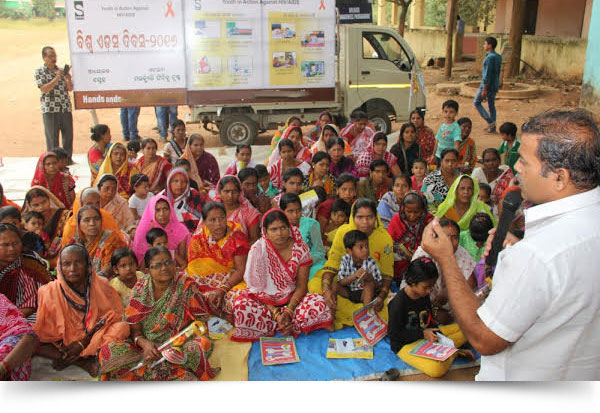
It is unfortunate that while the incidence of all diseases are twice higher in rural than in urban areas, the rural people are denied access to proper health care, as the systems and structures were built up mainly to serve the better off. While the urban middle class have ready access to health services that compare with the best in the world, even minimum health facilities are not available to millions of rural and tribal people, and wherever services are provided, they are inferior.
While the health care of the urban population is provided by a variety of hospitals and dispensaries run by corporate, private, voluntary and public sector organizations, rural healthcare services, mainly immunization and family planning, are organized by ill-equipped rural hospitals, primary health centers and sub-centers.
Rural people in general and tribal populations in particular, have their own beliefs and practices regarding health. Some tribal groups still believe that a disease is always caused by hostile spirits or by the breach of some taboo. They therefore seek remedies through magic o religious practices.
On the other hand, some rural people have continued to follow rich, undocumented, traditional medicine systems, in addition to the recognized cultural systems of medicine such Ayurveda, unani, siddha and naturopathy, to maintain positive health and to prevent disease. However, the socioeconomic, cultural and political onslaughts, arising partly from the erratic exploitation of human and material resources, have endangered the naturally healthy environment (e.g. access to healthy and nutritious food, clean air and water, nutritious vegetation, healthy life styles, and advantageous value systems and community harmony). The basic nature of rural health problems is attributed also to lack of health literature and health consciousness, poor maternal and child health services and occupational hazards.
Healthcare is the right of every individual but lack of quality infrastructure, dearth of qualified medical function-aries, and non- access to ba-sic medicines and medical facilities thwarts its reach to a major part of the population. Considering the picture of grim facts there is a dire need of new practices and procedures to ensure that quality and timely health-care reaches the deprived corners.Though a lot of policies and programs are being run by the Government but the success and effectiveness of these programs is question-able due to gaps in the implementation.


